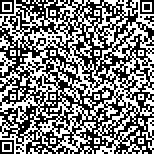Archive > Volume 43 Issue 9 > 2017,43(9):1029-1040. DOI:10.7519/j.issn.1000-0526.2017.09.001 Prev Next
Relative Impact from Surface, Radiosonde, Aircraft, Satellite, and Radar Observations on ShortTime Forecasting for Typhoon Fitow (2013) at Landfall
- Article
- Figures
- Metrics
- Preview PDF
- Reference
- Related
- Cited by
- Materials
Abstract:
An assessment is presented on the relative forecast impact on the shorttime forecasting for typhoon from six different observation data types: surface, radiosonde, aircraft, satellite, radar reflectivity, and radar radial velocity. In this paper, the landfall Typhoon Fitow, which seriously affected China in 2013, is chosen to investigate the relative impact from different data types on the typhoon track, intensity, and precipitation shorttime forecasting by using Observation System Experiment (OSE) method with the Weather Research and Forecasting model (WRF) and Community Gridpoint Statistical Interpolation (GSI3DVAR) system. The results show that: (1) the contribution of different data types to the simulation results is obviously different. On the whole, the radiosonde, radar reflectivity and aircraft report have a great influence on the simulation of temperature, humidity, and wind of the full troposphere. The root mean square error (RMSE) increases by about 54.8%-62.0%, 9.2%-16.5% and 6.1%-6.4% for the “denied” experiments (NRS, NRF, NAC, respectively) compared to the control experiments. (2) Different sequence of contribution rates can be found in different assessment parameters. The radiosonde and aircraft report have the greatest influence on the simulation of temperature, humidity, and wind of the full troposphere. The sequence of contributions on typhoon intensity simulation is radar radial velocity, radar reflectivity, radiosonde, and aircraft report. Radar reflectivity, radiosonde, and aircraft report have great influence on the precipitation simulation. (3) The timevariations of the contributions to precipitation simulation are different among different data types. The contribution of radar reflectivity data to precipitation decreases with the time of model integration, while the contribution of aircraft report and radiosonde data to precipitation appear after 3 h of model integration. (4) The improvement of precipitation simulation is related to the improvement of typhoon track, intensity and hydrometeors simulation. Therefore, the radar reflectivity, radiosonde and aircraft report, which have high influences on the simulation of the full troposphere, typhoon track, and intensity, also have a great contribution to the precipitation simulation.
Keywords:
Project Supported:
Clc Number:
P457


Mobile website









